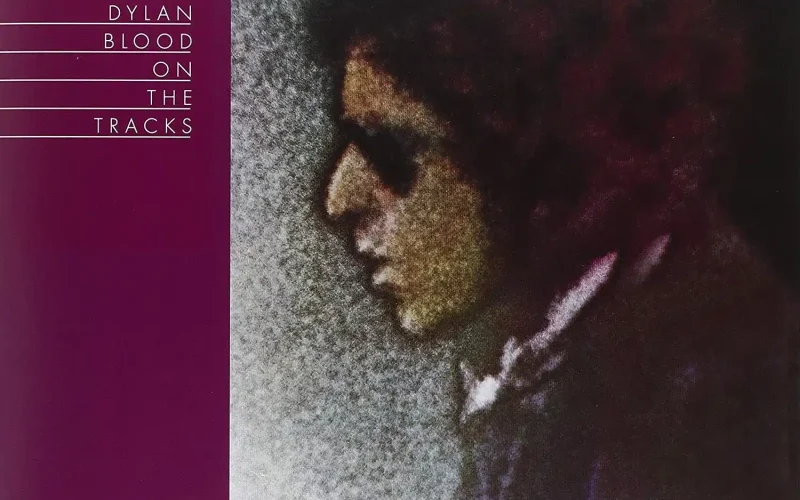This year marks the 50th Anniversary of Bob Dylan’s classic and influential record, Blood on the Tracks. The album Dylan 15th marked his return to Columbia Records after his two-record sojourn with Asylum Records. With autobiographical influences, Dylan’s son Jakob described the songs as my parents talking. He was separated from his wife, Sara, during the recording of the album, and the marriage eventually dissolved.
Released on January 20, 1975, Blood on the Tracks reached No. 1 on the US Billboard Chart and No. 4 on the UK’s Official Albums Chart. The single “Tangled Up in Blue” peaked at 31 on the US singles chart. It was certified as Double Platinum in the United States with over 2 million copies sold and Platinum in the UK with sales of over 300,000.
Recording Changes
The recording session started on September 16, 1974, at A & R Records in New York City. It was produced by Phil Ramone, who later said of the production that Dylan transitioned from one song to another as if they were part of a medley. Dylan went through two sets of session musicians before finally getting the right sound, and by November, the album had been recorded and mixed. He cut a test pressing of the album, and Columbia prepared to release the entire album before Christmas.
However, Dylan’s brother David thought the album was too stark-sounding, and others thought it harkened back too much to his pre-electric days. So, at his brother’s urging, he rerecorded five tracks at Sound 80 in Minneapolis with Dylan, backed by some local musicians recruited by David. The recording was finished in two days, and the album was finally released in January 1975.
Side One and Final Recording Location
Tangled Up in Blue
Dylan’s most popular song on the record is a story of star-crossed lovers. This song seems to be a metaphor for Dylan’s crumbling marriage to Sara, but strangely, the song ends in a hopeful vein. Also my favorite song of all time. The song is sung in the first person. Minneapolis
Simple Twist of Fate
This song is a dark story of a one-night stand that meant more to the man than the woman. After the woman leaves, the man blames all of his misfortunes on the twists of fate. Switches from a third-person narrative to a first-person in the last verse. New York
You’re a Big Girl Now
Told from a biased male view of a romance gone wrong. The man realizes that his former lover is coping with the breakup much better than he is. Dylan experimented with the order of the middle three verses. Minneapolis
Idiot Wind
Mysterious song with unclear origins. Was it about his breakup with Sara or his relationship with his parents? It starts with the subject complaining about his life and morphs into him owning up to his blame regarding the breakup. This song also refers to the juxtaposition of the Watergate scandal with his apprenticeship with an art teacher, Norman Raeben. Minneapolis
You’re Gonna Make Me Lonesome When You Go
Upbeat melody throughout in a song that Dylan claims is about literature. He mocks himself and compares his relationship to that of the French poets Paul Verlaine and Arthur Rimbaud. New York
Side Two and Final Recording Location
Meet Me In The Morning
It’s about a man wanting to meet an old lover and the distance he will travel to see her. Mick Jagger suggested that Dylan play the slide guitar on this song, but the attempt did not work. New York
Lily, Rosemary and the Jack of Hearts
Another upbeat track. The song is about a Western movie set in a cabaret with all the usual characters. There is plenty of action in this one as it includes lyrics about a killing and a subsequent hanging and a bank heist told over 15 verses. Minneapolis
If You See Her, Say Hello
The song talks about a lost love due to a falling out. The beautiful mandolin playing of local Twin Cities artist Peter Ostroushko highlights the song. Minneapolis
Shelter From the Storm
An upbeat song about a woman who is his shelter from the storm. Ultimately, though, the lead character is hurt by his lover. New York
Buckets of Rain
This song is about resignation, where the lead character realizes that life is sad and a bust even though he is in a content relationship. New York
Reception and Acclaim
Blood on the Tracks initially received a mixture of reviews when released. One Rolling Stone writer called it magnificent, while another called it shoddy. The Village Voice said it evoked romantic naivete, but it was Dylan’s most mature album. But Crawdaddy proclaimed that they found the instrumentation incompetent.
Since then, it is now viewed as not only one of Dylan’s greatest albums but also one of the top albums of all time. In 2020, the album was ranked number 9 on Rolling Stone‘s list of the 500 Greatest Albums of All Time. In 2004, Pitchfork placed it at number 5 on their list of the “Top 100 Albums of the 1970s. And in 2015, it was inducted into the Grammy Hall of Fame.
Billy Peterson Remembers
A couple of years back at Crooners Supper Club in Fridley, Minnesota, I had the chance to talk to Billy Peterson about the recording of the album. Billy, a Minnesota native, has played bass with numerous artists, including Steve Miller, B.B. King, and Les Paul. That night, he regaled me with the story of how he ended up playing bass on three of the album’s tracks.
He explained that he was contacted by Dylan’s brother David, who said that his brother needed some musicians to help finish an album. They met at David’s farm in southern Minnesota and made their way up to the Sound 80 studios in Minneapolis. Billy ended up playing the base on three songs; “Tangled Up in Blue,” “Idiot Wind,” and “Lily, Rosemary and the Jack of Hearts.”
Many thanks to Billy for taking the time to share those memories with me.








